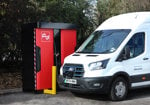C onsidering changing from a company car scheme to an employee car ownership (ECO) plan? Many firms make such a move, encouraged by promises of more flexibility and tax efficiency for staff and less administration burdens.
Many do their homework and weigh up the pros and cons of the various schemes available in order to come up with the best possible scheme for them.
All this, of course, is laudable. With so many schemes available, it’s extremely important to ensure that yours is airtight.
But no matter how great your ECO scheme, none of your homework and painstaking research will count for a jot if you don’t explain it properly to the people who matter – the employees.
You can have the greatest scheme the world has ever seen, but if the staff don’t understand it, fleet managers face a world of trouble.
In 2001, mindful of the forthcoming changes to the BIK tax regime, construction materials company Hanson decided to move from a traditional company car set-up to an ECO scheme.
The firm employs 6,700 people and at the time of change operated 1,200 company cars through a single badge deal with Vauxhall. The car an employee got was based on job grade. Private fuel was included with unlimited mileage – staff filled out mileage returns for tax purposes only.
David Weeks is head of communications for Hanson and recalls the reasons for changing from the traditional scheme.
He revealed at the Fleet News Hit for Six conference in Ilkley last week: ‘It cost the company a lot of money and we thought there would be savings by providing people with a cash alternative.
‘An ECO scheme meant no capital cost and unknown costs of maintenance.’
A working group was set up to look at the options available.
‘We wanted to make the change as seamless as possible,’ Weeks said. ‘We had to make it transparent so people knew what they were getting.’
In the end, Hanson chiefs decided to opt for a personal contract purchase scheme through Lloyds TSB autolease.
The scheme worked in a similar way to the existing set-up, in that provision, servicing and maintenance was taken care of by the fleet department, but the car was registered in the employee’s name, and the option of choosing and buying their own car instead was available if they wanted it.
Recognising that communicating the changes to staff was important, Hanson set up regional seminars and a telephone helpline to explain the scheme and answer any queries.
Each seminar was attended by 200 people and presented by Hanson managers and representatives from Lloyds TSB autolease.
‘It was a roadshow, so everyone got the same message,’ Weeks says. ‘They all went well. The basic principles were excellent, and people went away thinking ‘it sounds all right – what’s the catch?’.
‘It was not until they looked at their personal circumstances that we began to realise that everyone was different.’
The Hanson team was suddenly confronted with a series of complaints, each different.
‘One person would have a 50-mile journey to work. With him, a company car and free fuel was great.
‘Other people had personal issues relating to them which we hadn’t considered in imposing a blanket scheme.’
The fundamental problem, Weeks said, was that the majority of staff didn’t understand what their options were. ‘There was a feeling that the risk had been passed from the company on to them,’ he said.
‘It was chaos. The helpline was totally inundated with calls, all about personal issues relating to tax. People began to think ‘I see what’s in this for the company, but not for me’.
‘We had petitions drawn up and legal action threatened by several individuals. They felt it was a change in the terms and conditions to their employment and couldn’t just be imposed.’
Very quickly, Hanson realised its carefully thought-out communications approach to the change was nowhere near comprehensive enough.
‘We realised that everybody’s situation was different, if only slightly,’ Weeks said.
‘We should have done one-to-one consultations with everybody and explained what was going on and pointed them in the right direction. A lot of people had concerns fuelled by rumour around the coffee machine.
‘People compared notes and didn’t really understand how figures had been arrived at, and that was the key issue we failed to arrive at.’
The company moved quickly to try and limit the damage, and had the one-to-one sessions with each member of staff that they should have organised in the first place.
‘We produced newsletters with explanatory notes and case studies, so people began to come to terms with how the system worked,’ Weeks said.
‘We kept the doors open and said ‘if you have a problem or issue, there will always be someone to talk it through with you’.
‘We simply said, ‘have a go at it and see what you think. When people realised they did have much more freedom of choice in cars and flexibility, it was an attraction to people and eventually, everything fell into place.
‘We got there in the end,’ Weeks said, ‘but we learned that communicating change is a fundamental requirement for this kind of thing – it needs to be right at the top of your list of priorities.’
Essential information
Follow these guidelines and, if your scheme is sound, you should avoid major problems:















Login to comment
Comments
No comments have been made yet.